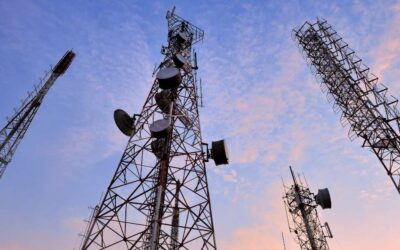How Do RF Studies Contribute to Safer Wireless Device Usage?

Wireless devices are now a fundamental part of daily life, from smartphones to Wi-Fi routers. As technology advances, so does our concern about its potential effects on our health, particularly regarding radiofrequency (RF) radiation. To better understand these effects, RF studies play a crucial role in assessing how exposure to wireless signals impacts human health and the environment. RF studies in Woodbridge, VA, and similar locations provide valuable insights into the risks and safety measures that can reduce any potential harm. By evaluating RF radiation levels, these studies help ensure that wireless devices remain safe for everyday use.
Let’s explore how RF studies contribute to safer wireless device usage, breaking down key aspects of their importance, including exposure levels, safety standards, and their role in product design.
What Are RF Studies?
RF studies focus on assessing the effects of radiofrequency radiation emitted by wireless devices, including cell phones, Wi-Fi routers, and microwave ovens. These studies help scientists and regulatory bodies understand how RF exposure impacts biological systems, particularly human tissue. The results are critical in establishing guidelines and safety limits for radiation exposure, ensuring devices like smartphones and tablets are safe to use.
RF studies are essential for evaluating the power, frequency, and duration of radiation emitted by various wireless technologies. Researchers use specialized equipment to measure these factors, helping to detect potential health risks associated with long-term exposure.
The Role of RF Exposure in Health Concerns
One of the primary concerns with wireless devices is the potential health risks associated with prolonged RF exposure. It’s important to note that no conclusive evidence has been found to directly link RF exposure to serious health issues.
RF studies provide valuable data that helps assess these risks. By measuring the exposure levels of devices in real-life scenarios, researchers can determine safe usage guidelines for the public. They also help inform recommendations for minimizing exposure, such as keeping devices at a distance from the body and limiting usage time.
How RF Studies Determine Safe Exposure Limits
To ensure wireless devices are safe for everyday use, RF studies evaluate the amount of radiation that is absorbed by human tissue, often referred to as the Specific Absorption Rate (SAR). The SAR value indicates the rate at which the body absorbs RF energy. Regulatory bodies like the Federal Communications Commission (FCC) use SAR values to set safety limits for devices such as cell phones. These studies play a critical role in maintaining public safety by ensuring that the radiation levels from wireless devices do not exceed these established limits.
For example, the FCC has set a SAR limit of 1.6 watts per kilogram (W/kg) for mobile phones, which is considered the maximum level of safe exposure. RF studies help verify that manufacturers comply with these standards, ensuring that the devices in use are within the safe limits of radiation exposure.
RF Studies and Device Design
RF studies are also essential in the design and development of wireless devices. Manufacturers rely on these studies to ensure that their products emit radiation within acceptable levels. By using data from RF studies, designers can make informed decisions about antenna placement, device shielding, and overall product construction to minimize radiation exposure.
RF studies help manufacturers develop safer products by ensuring that the devices do not exceed SAR limits during normal usage. Additionally, these studies can guide the development of new technologies that reduce RF emissions, such as low-power wireless communication systems and advanced antenna designs.
Regulatory Agencies and RF Studies
Regulatory agencies, including the FCC and the World Health Organization (WHO), rely on RF studies to set safety standards for wireless devices. These organizations monitor and regulate RF exposure levels to protect public health. In the United States, the FCC enforces RF exposure limits for consumer electronics, ensuring that products sold to the public meet safety guidelines based on the latest RF research.
These agencies work closely with researchers to ensure that safety standards evolve alongside technological advancements. As new wireless technologies emerge, RF studies help regulators stay updated on potential risks and ensure that new products adhere to safety protocols.
The Future of RF Studies
As wireless technology continues to evolve, so does the need for RF studies. With the rise of 5G networks, there is increasing concern about the potential for higher RF exposure due to the higher frequency and power levels involved in 5G transmissions. RF studies are already underway to assess the safety of these new technologies and ensure that they meet established safety standards.
As more research is conducted, RF studies will continue to play a vital role in understanding the long-term effects of RF exposure and ensuring that future wireless devices remain safe for consumers.
RF studies are critical to ensuring that wireless devices are safe for public use. By assessing the impact of RF radiation, setting exposure limits, and guiding device design, these studies provide valuable insights that help minimize potential health risks. As technology continues to advance, RF studies will remain an essential part of ensuring the continued safety of wireless devices. If you’re looking for expert advice on RF studies, reach out to Smith & Fisher for professional consultation on RF studies in Woodbridge, VA.
Recent Posts
- How to Handle RF Exposure Compliance at Multi-Station Broadcast Sites
- How Do RF Studies Contribute to Safer Wireless Device Usage?
- How ATSC 3.0 (NextGen TV) Works And Why It’s a Game Changer
- How 5G Is Shaping RF Test and Measurement Techniques
- The Importance of RF Studies in Modern Broadcasting: What You Need to Know






